wikiHow is a “wiki,” similar to Wikipedia, which means that many of our articles are co-written by multiple authors. To create this article, 64 people, some anonymous, worked to edit and improve it over time.
wikiHow marks an article as reader-approved once it receives enough positive feedback. This article received 70 testimonials and 82% of readers who voted found it helpful, earning it our reader-approved status.
This article has been viewed 5,913,528 times.
Learn more...
You were just elected or assigned as secretary of the committee you belong to. Congratulations! Do you know how to take, prepare, and present minutes? Whether you're following the legislative bible Robert's Rules of Order[1] or taking minutes in a less formal setting, here are the important methods to follow.
Steps
Preparing in Advance
-
1Know your organization's meeting policies. If the secretary is expected to take formal minutes, ask whether the group follows Robert's Rules of Orders or a different guide. In more informal settings, ask what should be included in the minutes or how they will be used.
- As the minutes taker, you do not need to familiarize yourself with the full Rules of Order. However, acquiring a copy (or borrowing the chairman's) can be useful for answering specific questions.
- Know your role as well. Some minute secretaries do not participate in the meeting, while others take minutes while contributing to the discussion. In either case the secretary should not be someone who has another major role, such as chairman or facilitator.[2]
-
2Prepare a template in advance. Each meeting's minutes will contain much of the same information. A template creates one consistent format for ease of reference. Include space for the following information at minimum.
- Name of organization.
- Type of meeting. Is this a regular weekly or annual meeting, a smaller committee meeting, or a meeting convened for a special purpose?
- Date, time, and place. Leave space for the start and end times (convening and adjourning).
- Name of chairman or meeting leader & name of secretary (or their substitutes).
- List of "attendees" and "apologies of absentees". This is a fancy term for attendance sheet. Note whether a quorum is present (the number of people sufficient to carry out votes).
- Space for your signature. As the minute taker, you will always sign your work. An additional signature may be required when the minutes are approved, according to your organization's policies.
- An agenda, if provided one. If the chairman or meeting facilitator has not asked you to draft the agenda, they should have one available upon request. Having one to refer will help you organize your meeting notes.
Advertisement -
3Bring a notebook or laptop with you. Make sure that whatever you bring is something you are comfortable with. If you will be writing minutes often, set aside a notebook for this purpose, or create a folder on your computer.
- If you took minutes at an earlier meeting and they have not been submitted for approval, make sure to bring those with you as well.
- While an audio recorder can help you transcribe the minutes later, it is not a substitute for note taking. If you do record the meeting, make sure everyone present consents and do not give in to the temptation to create a word-for-word transcript.
- Learning a shorthand will speed up note taking, but you do not need to be able to take down every word in order to take minutes. In fact, you should avoid doing so.
- If you are asked to take notes publicly during the meeting, use an overhead projector or presentation easel. Make sure you are able to take the notes home afterward without smudging them so you are able to use them to type up minutes.[3]
Taking Meeting Notes
-
1Distribute an attendance sheet. As soon as everyone is in attendance, distribute a single piece of paper (more for very large meetings) with space for each person to write their name and contact information. You can use this after the meeting to fill out the attendees section of your template, or attach the sign in sheet itself to the completed minutes.
- If you are unfamiliar with many of the people present, sketch a seating chart instead and fill it out as you ask everyone to introduce themselves. Keep it handy as you take meeting notes so you can refer to people by name when appropriate (as discussed below).[4]
-
2Fill out as much of your template as possible. While waiting for the meeting to begin, record the name of the organization, the date and place of the meeting, and the type of meeting (e.g. weekly board meeting, a special committee meeting, etc.). When the meeting begins, note the start time.
- If you don't have a template, record this information at the top of your meeting notes.
- If the meeting was called for a special purpose or at a special time, save the notice sent out to notify members. You should attach it to the minutes after they're transcribed.
-
3Note the result of the first motion. Most formal meetings will begin with a motion to adopt an agenda, so this step will use that as an example. If the meeting begins with a different motion, just make sure to record all the same relevant information:
- The exact wording of the motion beginning "I move". This will usually be "I move for the adoption of this agenda."
- The name of the mover (person who proposed the motion).
- The result of the vote. If the vote succeeds, write "motion carried." If it fails, write "motion failed."
- You may ask lengthy motions to be submitted in writing if you cannot record them accurately. If this is a recurring problem, ask between meetings if this can be made official policy for motions above a certain number of words.
- If you drafted the agenda, you may be the mover of this motion as well as the minutes secretary. That's fine; as long as you remain objective there is no problem recording your own actions.
-
4Record other motions throughout the meeting. Listen attentively to all discussions, but (unless instructed otherwise!) do not record them. When a new motion is made, record the relevant information.
- Remember, each motion should include the exact wording of the motion, the name of the mover, and the result of the vote.
- Some motions require a seconder before moving to a vote. If someone says "I second the motion" or similar, record that person's name as the seconder.
- If you don't know the name of the mover or need the motion repeated, interrupt the meeting politely to ask. Recording information accurately is important enough to justify a small interruption.
- If a motion is amended, simply alter the wording of the motion in your notes. Unless the amendment is controversial and provokes a lot of discussion, there is no need to record that an amendment occurred.[5]
-
5Listen to reports and obtain copies. Whenever a report, news bulletin, or similar item is read aloud, record the name of the report and the person reading it (or the name of the subcommittee that drafted it). If there is a motion attached, record it like you would any other motion.
- It's most practical to obtain a copy at the end of the meeting. Make a note to ask the reader or meeting leader (chairman or president) for a copy afterwards. You'll attach a copy of each report to the minutes once transcribed.
- If copies are not available, instead note where the original document is kept. You may need to ask for this information after the meeting.
- If a member makes an oral report (instead of reading from a document), write a brief, objective summary of the report. Do not go into specific detail or quote the speaker verbatim.
-
6Record actions taken or assigned. This includes "check ins" on the last meeting's assignments as well as new actions. Has someone been assigned to write a letter? Note their name and instructions.
- Depending on how formal your meeting is, many of these actions may fall under the umbrella of "motions". For less formal meetings, you may need to keep your ears peeled for less clearly organized decisions as well.
- Include a brief mention of the rationale behind a decision if one is given.
-
7Record all points of order and rulings. Whenever an objection is made to a procedure, record the full objection and its basis, as well as the full ruling given out by the Chairman.
- Be sure to include any references to Robert's Rules of Order, the organization bylaws, or company protocol.
-
8Only if asked, record summaries of discussions. Officially, minutes are a recording of what was done, not what was said. However, fulfill any specific requests your organization makes of you.
- When recording discussion, be as objective as possible. Include concrete points, not opinions, and minimize the use of adjectives and adverbs. Dry, factual, boring writing is your goal![6]
- Do not refer to people by name during the discussion summary. This is especially important during heated arguments that might cause offense.
-
9Wrap up at the end of meeting. Record the time the meeting adjourned. Remember to pick up any copies of reports or remind someone to send them to you.
- Skim your notes to see if there's anything missing or that needs clarification. If you need to ask someone a question, do so now before they leave.
Transcribing the Minutes
-
1Begin this process as soon as possible. It's best to transcribe the official minutes immediately after the meeting, when events are still fresh in your mind.[7]
-
2Use a computer to type up your meeting notes. You may already have done this if you used a laptop at the meeting. Save your notes and begin a new document for the minutes so you can compare your notes and minutes side by side.
-
3Format your notes into neat paragraphs. Each new motion, decision, or point of order should be in its own paragraph. As you format them, check that you:
- Use correct spelling and grammar. Use a spellchecker if you need to.
- Use the same tense throughout. Use the past or present tense, but never switch between them in the same document.
- Are objective as possible. Your own opinion should never be deducible from the minutes. You are trying to create an objective record for everyone to use.
- Use simple, exact language. Any vague language should be replaced with precise wording. Flowery descriptions should be removed entirely.
- Include only actions taken, not discussions. Unless you've been asked to record discussions, you should focus on what was done, not what was said.
- Number the pages for ease of reference.
-
4Distribute a draft of your minutes to members. Send a copy to each member using the contact information on the sign in sheet. If you don't have their contact information, the meeting leader should be able to reach them.
-
5Get the meeting minutes approved. You may be asked to read the minutes aloud at the next meeting and submit them for approval. If the motion passes, mark that the minutes were accepted.[8]
- If the minutes are corrected before they are accepted, make the changes in the document and indicate at the end that the minutes were corrected. Don't describe specific corrections.
- If a motion is made to correct the minutes after they have been accepted, include the exact wording of that motion in the relevant minutes and whether or not the motion passed.
By Using Meeting Minutes Templates
-
1Visit a meeting template collection site. These pre-made templates will save you setup time organizing your minutes, and help prevent mistakes.
-
2Take some time to browse on each site. Use their search features and scroll through the options to find one that is best for you.
- If you need a specific kind of template--general or standard, for example--browse through the sites for your specific needs and download it by clicking the “download” or “use template” buttons. Make sure you save it in an easy to find place so it doesn’t get lost.
-
3Open the file. Now that you have it downloaded, unzip the file and open it in Microsoft Word or Excel. For the best quality and ease of use, use the latest version of Microsoft word. Keeping up to date will only make things simpler and allow you to make use of new features.
-
4Add your company logo and copyright sign in the header. Delete the other sample logo--but be sure to read the terms of use of whatever site you got the template from first. No need for any unnecessary legal troubles, right?
-
5Change the title. In the title area, highlight the words “Meeting/Group” and type in your actual title for your meeting minutes.
-
6Change the theme (optional). To make your minutes template look nicer and more professional, consider changing up the colors, or choosing an already made theme. It’s simple: find the “Page layout” tab and follow it to the “Colors and Themes” section. There, you can customize how your template looks. You can even make it match the colors of your company logo.
-
7Name the template sections. There should be several field names along the template. Maybe you need more, maybe less, or maybe you just don’t like the way they’re labeled. Customize them to fit the needs of your meetings.
-
8Save the template to your laptop so you can bring it to meetings to begin taking minutes. If you continue to use Microsoft Office, things will be quick and easy, and you should be able to keep up with the meeting in an even more organized and precise way than before. Alternatively, you can print out your template to write your notes by hand, but make sure you maintain the field heights to make sure you can fit as much information in as you need.
-
9Proofread your template. Congratulations! Your meeting minutes template is completed. Your productivity and accurateness during meetings should rise up exponentially now that you have a template to guide you and organize your thoughts. As with any project, skim the details of your template to see if there’s anything missing or unclear. Once you’re sure that everything is in order, your template will be finalized for use and you’ll be ready for your upcoming meetings.
Community Q&A
-
QuestionWhere can I get training for taking minutes?
 wikiHow Staff EditorThis answer was written by one of our trained team of researchers who validated it for accuracy and comprehensiveness.
wikiHow Staff EditorThis answer was written by one of our trained team of researchers who validated it for accuracy and comprehensiveness.
Staff Answer wikiHow Staff EditorStaff AnswerYou can get minute taking training online from a variety of websites that offer courses and webinars in various business skills. You might also be able to take a class from the business school at a local college or university.
wikiHow Staff EditorStaff AnswerYou can get minute taking training online from a variety of websites that offer courses and webinars in various business skills. You might also be able to take a class from the business school at a local college or university. -
QuestionWhat’s the professional format for meeting minutes?
 wikiHow Staff EditorThis answer was written by one of our trained team of researchers who validated it for accuracy and comprehensiveness.
wikiHow Staff EditorThis answer was written by one of our trained team of researchers who validated it for accuracy and comprehensiveness.
Staff Answer wikiHow Staff EditorStaff AnswerThere are a variety of formats you can use, but Robert’s Rules of Order offers a good foundation for formatting your minutes professionally. You can also use a template to help you format your minutes in a professional and logical way.
wikiHow Staff EditorStaff AnswerThere are a variety of formats you can use, but Robert’s Rules of Order offers a good foundation for formatting your minutes professionally. You can also use a template to help you format your minutes in a professional and logical way. -
QuestionIf I only have three employees, who are family members, do I still need to record the minutes?
 Community AnswerYes. Decisions should be published in minutes for clarity and future reference.
Community AnswerYes. Decisions should be published in minutes for clarity and future reference.
Warning
- Don't put too much detail into the minutes. Even if you have been asked to record discussions, keep them as brief and to the point as possible. Restrict yourself to recording the major points raised or you'll be overwhelmed and fill the minutes with unnecessary detail.
- Personal interpretations and feelings of the minute taker must not be entered into the record.
- If a portion of the meeting falls under lawyer-client privilege, do not record that portion. Note instead that "counsel informed that the discussion fell under lawyer-client privilege. The discussion was unrecorded".
- If you are asked to record a confidential discussion such as between a lawyer and a client, take separate minutes and store them separately from the general meeting minutes. Mark them confidential and make it clear who has access to them.
References
- ↑ http://www.robertsrules.com/
- ↑ http://www.mftrou.com/meeting-minutes.html
- ↑ http://www.mftrou.com/meeting-minutes.html
- ↑ http://www.mftrou.com/meeting-minutes.html
- ↑ http://www.workerseducation.org/crutch/procedure/minutes.html
- ↑ https://assets.publishing.service.gov.uk/government/uploads/system/uploads/attachment_data/file/61207/Guide_20to_20Minute_20Taking.pdf
- ↑ http://www.governance.uwa.edu.au/committees/principles/meetings/preparation/minutes#steps
- ↑ http://www.governance.uwa.edu.au/committees/principles/meetings/preparation/minutes#steps
About This Article
To take minutes at a meeting, have all the attendees write their names on a sign-in sheet when they come in. While you wait for the meeting to start, write down the name of the organization, the type of meeting, and the date and place. When the meeting starts, write the exact wording of each motion, the names of people who propose and second motions, and the results of each vote. Record summaries of reports and get copies of any written material that’s presented, and make sure to record the time the meeting adjourns. To learn more about how to transcribe the minutes or how to make a template for future meetings, continue reading!


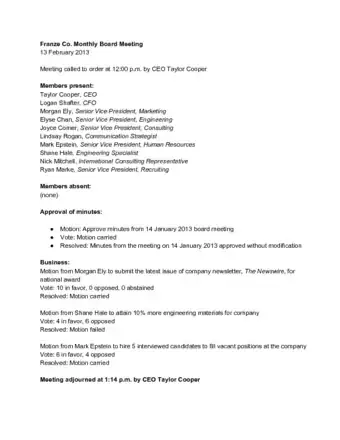
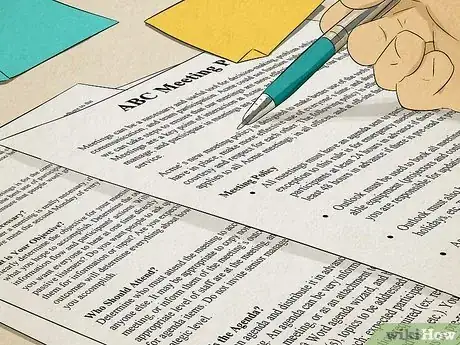
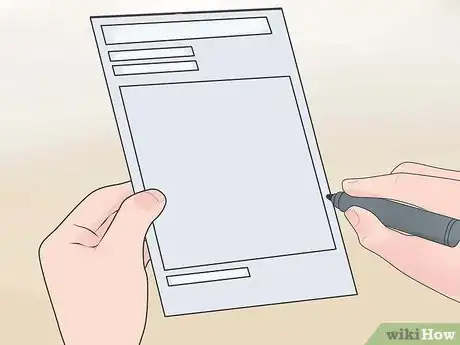



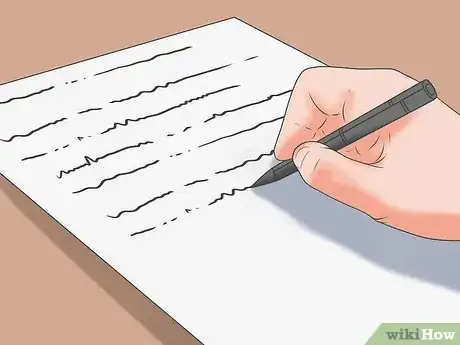

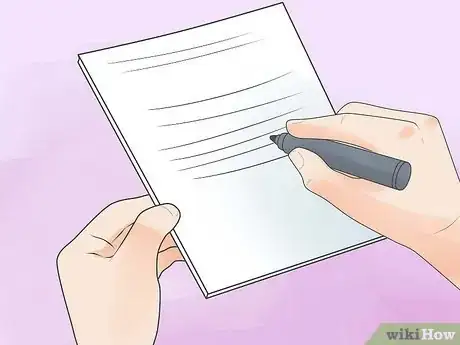
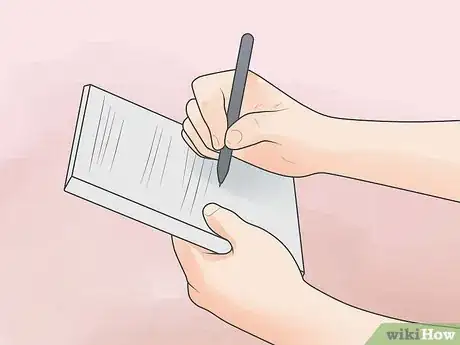









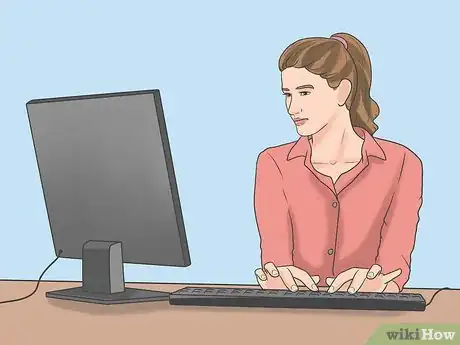
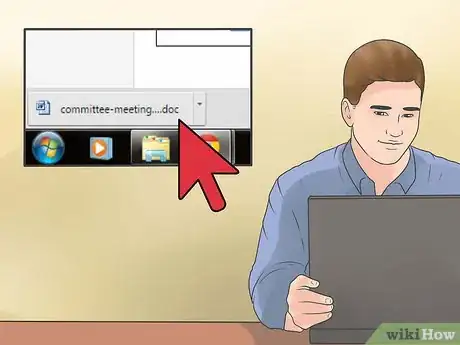

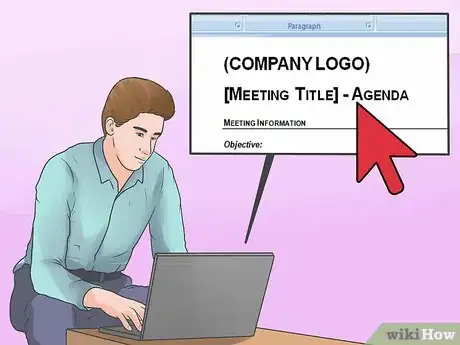
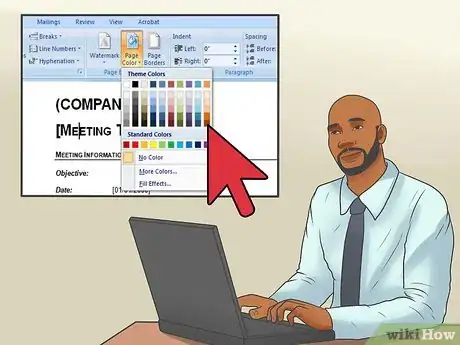
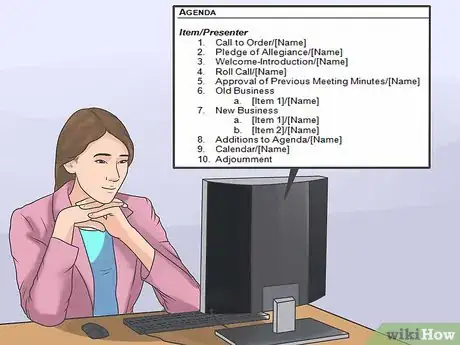
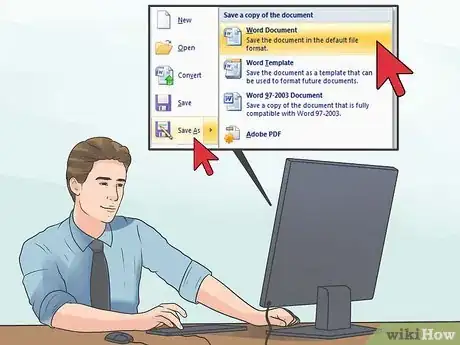

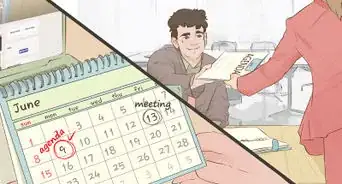


-Step-23.webp)


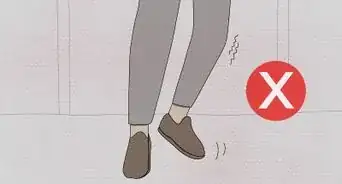



















-Step-23.webp)


































